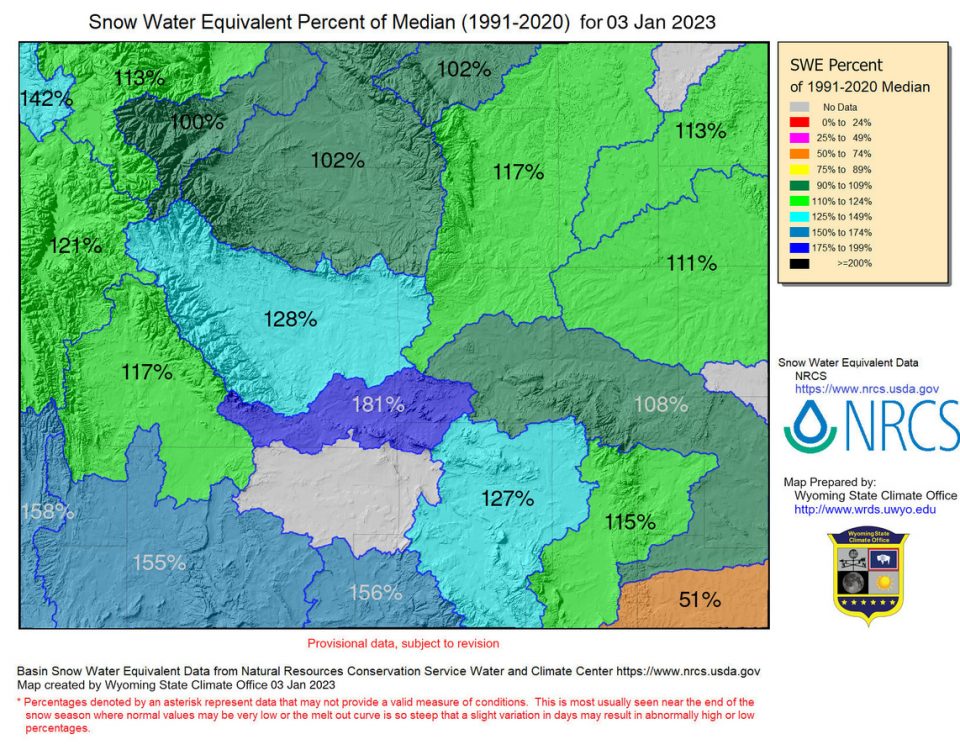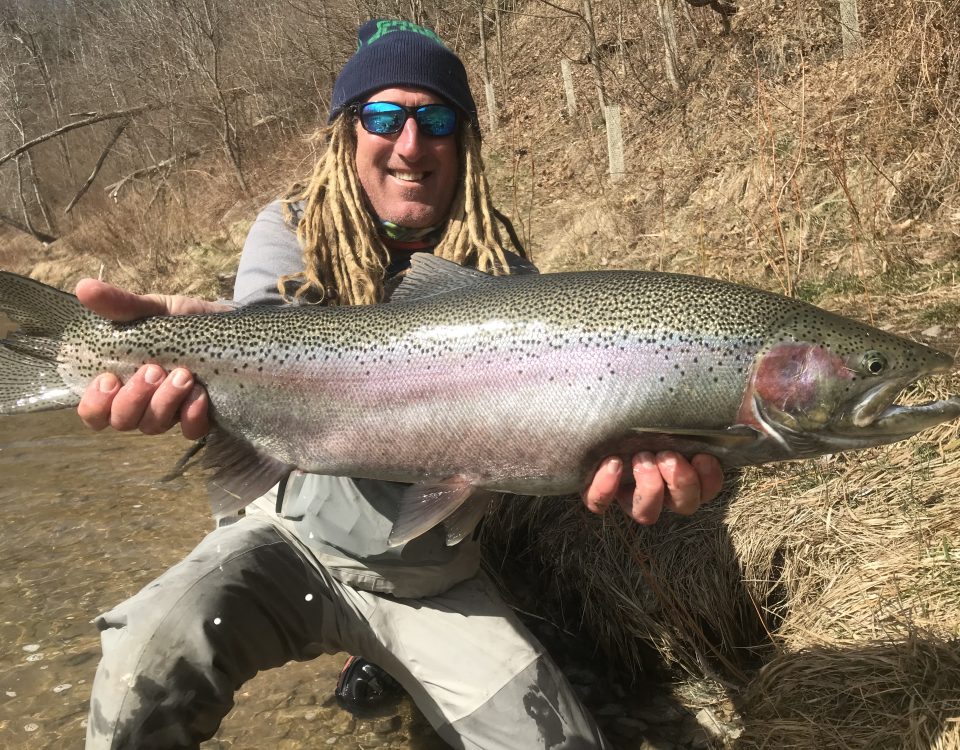While major storms have spared western Wyoming valley floors for weeks, monitoring equipment up in the mountains is still registering a snowpack that has plenty of heft.
Compared to average for the first week of March, the amount of moisture packed into the snowfields that drain into the Snake River and its tributaries are right below average — 93 percent of normal on Monday. Mike Beus, the Bureau of Reclamation’s Upper Snake Basin water operations manager, said he’s forecasting a spring runoff season that’s 85 to 87 percent of average.
“We continue to have a 30-day forecast for a slightly elevated chance of a dry March,” Beus said.
Base flows in area streams and rivers are relatively low, too, he said, which contributes to the somewhat diminished forecast.
Although slopes around town are now mostly brown, snowstorms abruptly whitened the valleys and low-elevation hillsides early on this winter.
“We got a really good start, especially at the lower elevations,” Beus said. “We’ve had such good snow at low elevations that the perception of the public is often that it’s wetter than it is.”
A year ago, Beus said, there was the opposite set of conditions: A lack of snow cover at low elevations fueled perceptions of a dismal all-around snowpack. Instead it ended up being an average winter.
In another change from last winter, the thirsty cultivated fields of Idaho’s Snake River Plain have been plenty wet naturally. That will have implications for releases out of Palisades Reservoir and Jackson Lake, and as a result flows in the Snake River. In early 2015 a dry winter led to eastern Idaho agricultural demands coming an unprecedented four weeks earlier than normal.
“We don’t expect any early increases in flows,” Beus said. “Irrigation demand won’t come on until mid-April, although a few good [soil-drying] windy days could change that.”
As of Monday, Jackson Lake was 67 percent full and Palisades was at 58 percent of its capacity. Those storage levels, Beus said, could be a little higher but are not “drastically low.”
The University of Wyoming’s Water Resource Data System shows that the Upper Snake’s snowpack is relatively uniform in the region.
On the high end of the spectrum the 8,560-foot Blind Bull monitoring site in the Wyoming Range is registering a snowpack that’s 105 percent of average. The snowpack is at its relative slightest at a 8,750-foot site in the Gros Ventre Range, where a 10.6-inch “snow-water equivalent” reading is just 80 percent of average. The Teton Range’s Phillips Bench monitoring site, measured Monday, had 20.6 inches of water weight in its snow, 86 percent of average.
The Bureau of Reclamation’s annual Jackson meeting on streamflow forecasts and reservoir operations has been scheduled for the evening of May 19. Details like time and location are still being arranged, Beus said.
Contact Mike Koshmrl at 732-7067 or [email protected].




